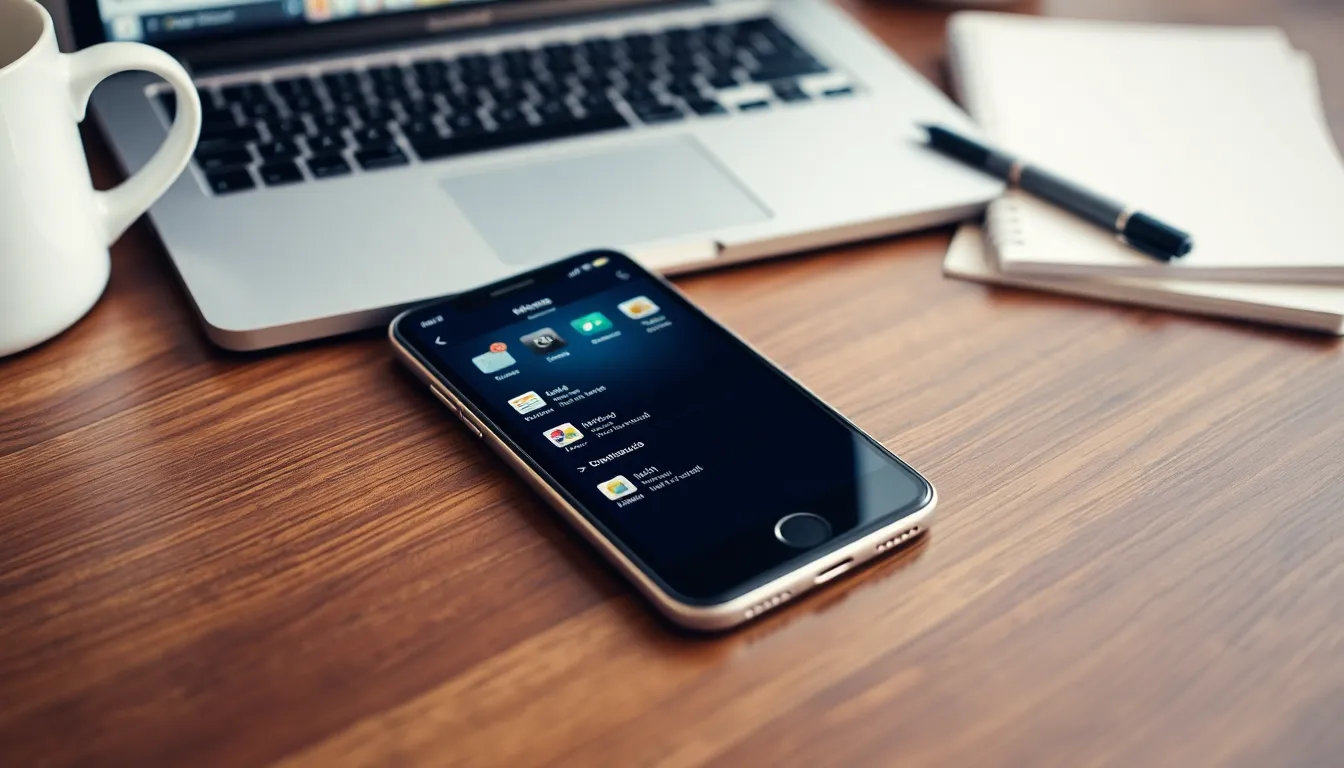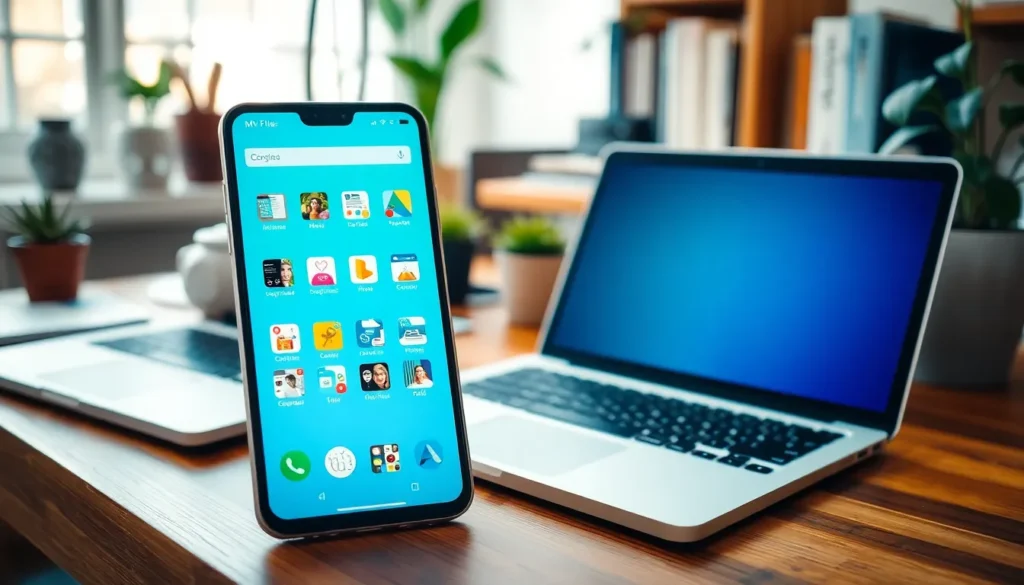Table of Contents
ToggleEver scrolled through your phone’s downloads and wondered if you’ve stumbled into a digital Bermuda Triangle? From that one random cat video to a PDF titled “Super Important Documents” that you swear you never downloaded, the mystery of file downloads can be both amusing and overwhelming.
Understanding My Files Downloads on My Phone
Navigating the downloads on a phone can feel daunting. The variety of files accumulated can lead to confusion if not managed properly.
What Are My Files?
“My Files” refers to the app or folder where downloaded content resides. Users typically find images, videos, documents, and other media in this space. Each file serves a purpose, whether it’s a receipt saved as a PDF or a music track downloaded for offline listening. Identifying these files allows users to organize their digital clutter. The ability to access significant documents quickly enhances workflow. Visibility into all types of files fosters a complete understanding of what’s stored on the device.
Importance of Managing Downloads
Managing downloads prevents clutter and confusion. Constantly downloading new files can clutter the storage space quickly. Organization helps ensure easy retrieval of important items. Creating folders for categories like work, personal, or entertainment simplifies navigation. Regularly reviewing downloads allows users to delete unwanted files promptly, freeing up storage. Efficiently managing these files optimizes phone performance. Users avoid missing important documents buried under irrelevant downloads by staying organized.
Where to Find My Files Downloads

Locating downloaded files on a phone simplifies the process of organizing digital content. Proper knowledge of default storage locations and file manager access enhances efficiency.
Default Storage Locations
Downloads usually find their way into predetermined folders. Most Android devices store files in the “Downloads” folder, easily accessible from the home screen or app drawer. iPhones direct downloads to the “Files” app, under the “On My iPhone” section. Users often discover images and documents in these areas without difficulty. Understanding these key locations supports quick access to essential files. Regularly checking these folders maintains organization.
Accessing Downloads Through File Manager
Accessing downloads through a file manager offers a streamlined approach. Most devices come equipped with a built-in file manager app, allowing straightforward navigation. Open the app to view various folders, including “Downloads.” Tapping on this option reveals all downloaded content. Users can quickly preview, move, or delete files within this space. For quicker access, some file managers feature search functions, enabling users to locate specific downloads instantly. Utilizing file managers promotes better file management and enhances overall device functionality.
Organizing My Files Downloads
Organizing downloaded files makes locating important content straightforward. Users can enhance efficiency by maintaining a systematic approach to file management.
Creating Folders for Better Management
Creating categorized folders significantly simplifies the organization process. Users can set up folders based on file types, such as images, videos, and documents. This strategy aids quick access to specific files. Regularly updating these folders ensures relevance and usability. For Android devices, the “My Files” app offers user-friendly options to create folders. iPhone users can utilize the “Files” app for similar functionality. By organizing files into distinct categories, users avoid overwhelming clutter. Consistent labeling allows for easy identification of contents within each folder.
Deleting Unnecessary Files
Deleting unnecessary files prevents digital clutter from building up over time. Users should regularly review downloads to identify files no longer needed. This practice frees up valuable storage space on devices. Android users can use the file manager to explore downloads and delete unwanted items efficiently. iPhone users can access files through the “Files” app to manage their downloads. Implementing this routine contributes to a more organized digital environment. Quick decisions on which files to keep or remove enhance overall device performance. Prioritizing essential documents helps users retain significant information while discarding irrelevant data.
Troubleshooting Common Issues
Navigating download issues can enhance overall phone management skills. Users often encounter a few prevalent problems that can disrupt the downloading process.
Download Failures
Download failures frequently occur due to inconsistent internet connections. Interruptions during the downloading process often lead to incomplete files. Checking network status might resolve these issues quickly. Users can also try restarting their devices to reset connections. Sometimes, third-party apps interfere, so disabling these temporarily can help identify the problem. Verifying storage space is essential, as insufficient space can hinder downloads. Lastly, ensuring the app permissions are correctly set may also resolve failures.
Files Not Appearing in My Files
Files often disappear from view despite being downloaded. This occurrence may be attributed to incorrect saving locations. Users should first check the default folders set for downloads. In some cases, restarting the device may refresh the file visibility. Searching for the file using its name in the My Files app often yields results. Checking hidden files in the file manager also proves useful. If a downloaded file remains elusive, consider re-downloading it, ensuring a reliable connection this time.
Managing downloaded files on a phone can significantly enhance user experience and device performance. By organizing files into categorized folders and regularly reviewing downloads, users can easily access important documents while minimizing digital clutter.
Utilizing tools like the “My Files” app or the “Files” app helps streamline this process. Addressing common download issues ensures a smoother experience and allows users to maintain a well-organized digital space.
Taking the time to manage downloads not only prevents frustration but also promotes efficiency in everyday tasks. A little organization goes a long way in keeping digital life manageable and accessible.




